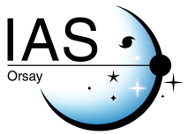The far-infrared view of M87 as seen by the Herschel Space Observatory
| Title | The far-infrared view of M87 as seen by the Herschel Space Observatory |
| Publication Type | Conference Paper |
| Year of Publication | 2011 |
| Authors | Baes, M, Clemens, M, Xilouris, EM, Fritz, J, Cotton, WD, Davies, JI, Bendo, GJ, Bianchi, S, Cortese, L, De Looze, I, Pohlen, M, Verstappen, J, Bohringer, H, Bomans, DJ, Boselli, A, Corbelli, E, Dariush, A, Alighieri, SD, Fadda, D, Garcia-Appadoo, DA, Gavazzi, G, Giovanardi, C, Grossi, M, Hughes, TM, Hunt, LK, Jones, AP, Madden, S, Pierini, D, Sabatini, S, Smith, MWL, Vlahakis, C, Zibetti, S |
| Editor | Romero, GE, Sunyaev, RA, Belloni, TM |
| Conference Name | Jets at All Scales |
| ISBN Number | 1743-9213<br/>978-0-52176-607-4 |
| Accession Number | WOS:000304974800026 |
| Abstract | The origin of the far-infrared emission from the nearby radio galaxy M87 remains a matter of debate. Some studies find evidence of a far-infrared excess due to thermal dust emission, whereas others propose that the far-infrared emission can be explained by synchrotron emission without the need for an additional dust emission component. We observed M87 with PACS and SPIRE as part of the Herschel Virgo Cluster Survey (HeViCS). We compare the new Herschel data with a synchrotron model based on infrared, submm and radio data to investigate the origin of the far-infrared emission. We find that both the integrated SED and the Herschel surface brightness maps are adequately explained by synchrotron emission. At odds with previous claims, we find no evidence of a diffuse dust component in M87. |



